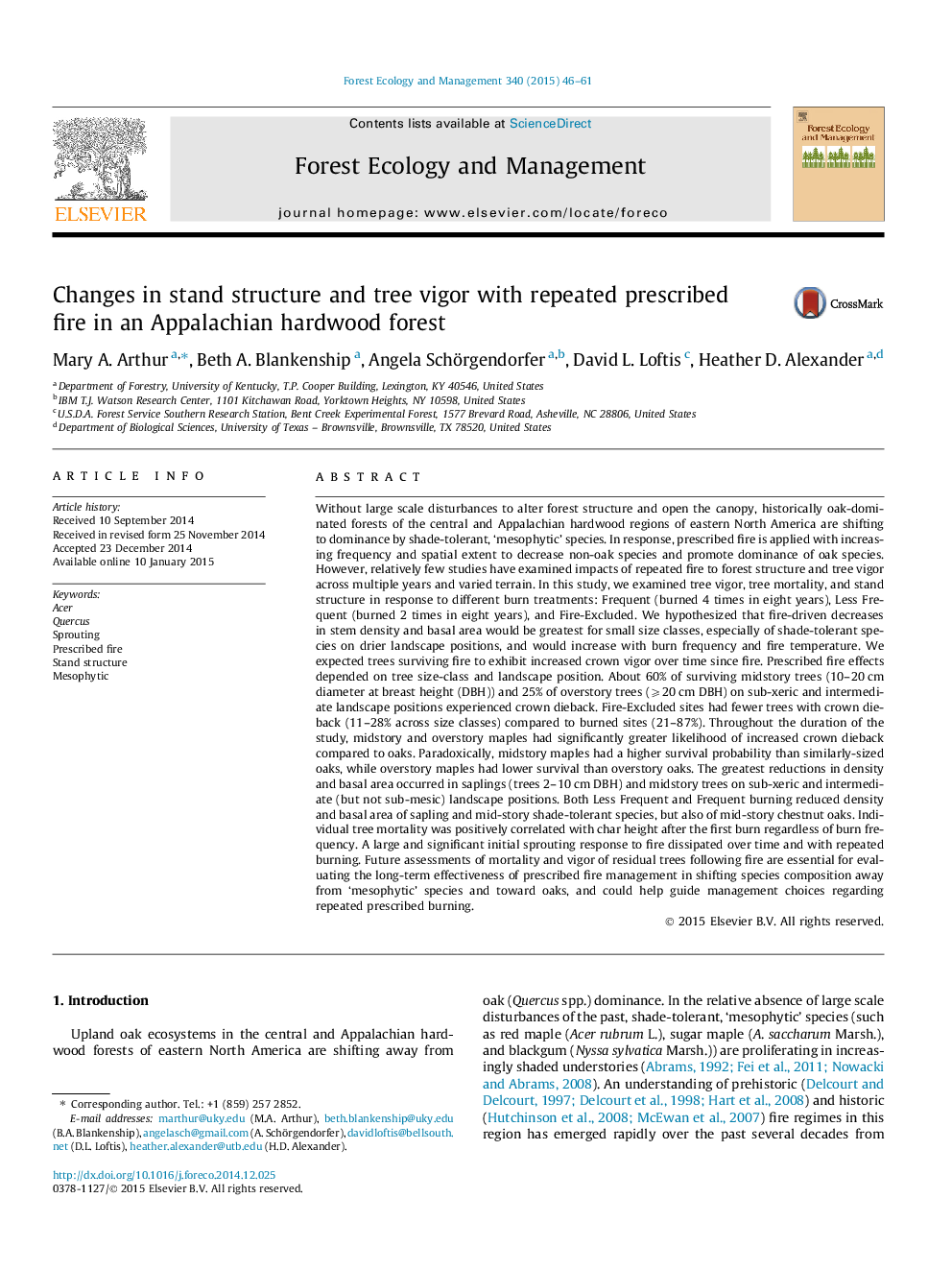| کد مقاله | کد نشریه | سال انتشار | مقاله انگلیسی | نسخه تمام متن |
|---|---|---|---|---|
| 86341 | 159180 | 2015 | 16 صفحه PDF | دانلود رایگان |
• Upland oak forests were prescribed burned multiple times to assess forest response.
• We measured changes in tree vigor, mortality, sprouting and stand structure.
• Fires led to ongoing tree mortality with differing responses among oaks and maples.
• Sprouting in response to fire lessened over time and with repeated burning.
• Improved understanding of long term tree species response to fire is needed.
Without large scale disturbances to alter forest structure and open the canopy, historically oak-dominated forests of the central and Appalachian hardwood regions of eastern North America are shifting to dominance by shade-tolerant, ‘mesophytic’ species. In response, prescribed fire is applied with increasing frequency and spatial extent to decrease non-oak species and promote dominance of oak species. However, relatively few studies have examined impacts of repeated fire to forest structure and tree vigor across multiple years and varied terrain. In this study, we examined tree vigor, tree mortality, and stand structure in response to different burn treatments: Frequent (burned 4 times in eight years), Less Frequent (burned 2 times in eight years), and Fire-Excluded. We hypothesized that fire-driven decreases in stem density and basal area would be greatest for small size classes, especially of shade-tolerant species on drier landscape positions, and would increase with burn frequency and fire temperature. We expected trees surviving fire to exhibit increased crown vigor over time since fire. Prescribed fire effects depended on tree size-class and landscape position. About 60% of surviving midstory trees (10–20 cm diameter at breast height (DBH)) and 25% of overstory trees (⩾20 cm DBH) on sub-xeric and intermediate landscape positions experienced crown dieback. Fire-Excluded sites had fewer trees with crown dieback (11–28% across size classes) compared to burned sites (21–87%). Throughout the duration of the study, midstory and overstory maples had significantly greater likelihood of increased crown dieback compared to oaks. Paradoxically, midstory maples had a higher survival probability than similarly-sized oaks, while overstory maples had lower survival than overstory oaks. The greatest reductions in density and basal area occurred in saplings (trees 2–10 cm DBH) and midstory trees on sub-xeric and intermediate (but not sub-mesic) landscape positions. Both Less Frequent and Frequent burning reduced density and basal area of sapling and mid-story shade-tolerant species, but also of mid-story chestnut oaks. Individual tree mortality was positively correlated with char height after the first burn regardless of burn frequency. A large and significant initial sprouting response to fire dissipated over time and with repeated burning. Future assessments of mortality and vigor of residual trees following fire are essential for evaluating the long-term effectiveness of prescribed fire management in shifting species composition away from ‘mesophytic’ species and toward oaks, and could help guide management choices regarding repeated prescribed burning.
Journal: Forest Ecology and Management - Volume 340, 15 March 2015, Pages 46–61
